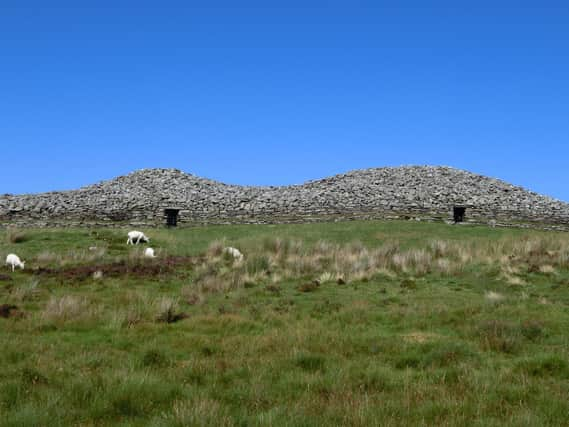The new trend for prehistoric-style burials in Scotland


Now, academics are looking at the growing trend for prehistoric-style burials – with two sites in Scotland set to be home to modern versions of ancient barrow burial mounds where ashes can be placed.
Plans are in development to build barrow mounds at Kinghorn in Fife and at Fingask Castle near Perth. At Perth, it is proposed the chamber will be lit by candlelight.
Advertisement
Hide AdAdvertisement
Hide AdArchaeologist Dr Kenny Brophy and researcher Andrew Watson have received funding to research the allure of such burials in the modern day with 10 of these sites in operation or in the planning process across the UK.
Each has design elements taken from megalithic burial mounds from the Neolithic and Bronze Age periods.
Dr Brophy, whose research project is called Death BC, said: “I am excited that the British Academy have agreed to fund this research and grateful for builders, owners and users of barrow columbaria for being willing to collaborate with us.
"The construction of prehistoric-style monuments appears to be more fashionable now than it has been for millennia and I want to make sense of why this might be.
Advertisement
Hide AdAdvertisement
Hide Ad“An archaeological perspective to the study of these barrows is relevant not just because of the prehistoric connections, but also because we are interested in how people interact with buildings and material culture in relation to death and burial in any time period”.
Researcher Andrew Watson added: “Death BC is the first project of its kind and builds on my doctoral research with Dr Brophy. This project will allow us to advance this research further, exploring the significance of these monuments not only to people interring loved ones but wider society.
"We also hope to be able to explore contemporary perspectives on death, burial, mourning and remembrance through these monuments and the communities associated with them”.
Barrows are made from earth or stone – with stone versions usually called cairns – which were constructed between 3800BC and 1400 BC.
Advertisement
Hide AdAdvertisement
Hide AdCamster Cairns in Caithness, which was built up to 5,750 years ago are among the best examples in Scotland, along with Maeshowe in Orkney.
The first modern version of the prehistoric burial mound was at The Long Barrow at All Cannings, Wiltshire, in 2014, built by Tim Daw, and since then several barrows have followed.
At Fingask Castle, owner Andrew Threipland wants to create more than 1,000 woodland burial plots along with a semi-underground, candle-lit chamber where ashes can be deposited.
Mr Threipland said previously: “Many of mankind’s greatest achievements, such as the pyramids of Egypt, have been structures to commemorate the dead.
Advertisement
Hide AdAdvertisement
Hide Ad“I thought it might be popular to build a 21st century barrow, with locked chambers in the walls in which people could deposit the ashes of their loved ones, and where they could remember the dead with singing or readings in a spiritual space.”
In Fife, the Kinghorn Community Land Association commissioned Edinburgh-based architects Simpson and Brown to design a columbarium, which houses urns and cremated remains.
Richard Brewster, KCLA chairman, earlier described the columbarium as "unique place of remembrance" which would help meet demand for burial space in the area.
